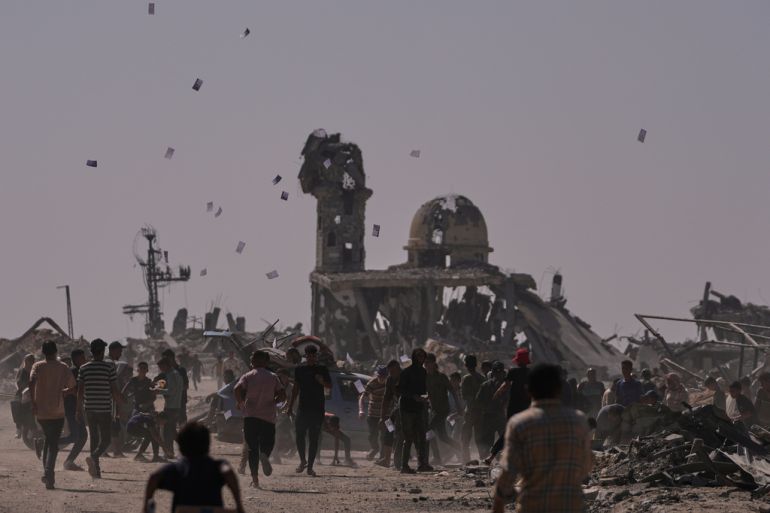Trump claims Middle East countries offered to fight Hamas in Gaza
US president renews his threats to Hamas, saying that the Palestinian group could face ‘FAST, FURIOUS, BRUTAL’ end.

 Published On 21 Oct 202521 Oct 2025
Published On 21 Oct 202521 Oct 2025
Save
United States President Donald Trump has suggested that several countries in the Middle East have offered to send forces to Gaza to fight Hamas, renewing his threats to the Palestinian group amid the fragile ceasefire in the territory.
“Numerous of our NOW GREAT ALLIES in the Middle East, and areas surrounding the Middle East, have explicitly and strongly, with great enthusiasm, informed me that they would welcome the opportunity, at my request, to go into GAZA with a heavy force and ‘straighten our Hamas’ if Hamas continues to act badly, in violation of their agreement with us,” Trump wrote on Truth Social on Tuesday.
Recommended Stories
list of 3 itemsend of list
Trump did not specify which countries offered to go into Gaza, but he did single out Indonesia for its assistance in the region.
“I would like to thank the great and powerful country of Indonesia, and its wonderful leader, for all of the help they have shown and given to the Middle East, and to the USA,” Trump said.
Jakarta and other governments have offered to send peacekeeping troops to restore security and stability in Gaza, but no country has said that it would be willing to clash directly with Hamas.
“The love and spirit for the Middle East has not been seen like this in a thousand years! It is a beautiful thing to behold! I told these countries, and Israel, ‘NOT YET!’ There is still hope that Hamas will do what is right,” the US president said.
“If they do not, an end to Hamas will be FAST, FURIOUS, & BRUTAL!”
Israel has killed nearly 100 Palestinians since the ceasefire took effect on October 10.
Trump often issues similar threats to Hamas. But it is not clear what the US or any other force can do to strong-arm the Palestinian group that Israel has not.
Advertisement
Over the past two years, Israel has killed most of Hamas’s political and military leaders, while also levelling Gaza to the ground and imposing famine on the territory in a campaign that leading rights groups and United Nations investigators say is a genocide.
Trump had been hailing the ceasefire, which his administration helped broker, as a historic turning point to bring peace to the region.
But from the outset of the truce, Israel has been killing Palestinians it claims were approaching areas under control of the Israeli military, which are not clearly marked.
Moreover, Israel has continued to restrict aid to Gaza despite commitments in the deal to allow a surge in humanitarian assistance to the territory.
According to the Gaza Government Media Office, Israel has only allowed the entry of 986 aid trucks into the enclave since the start of the ceasefire, a fraction of the expected 6,600 trucks, at a rate of 600 daily.
On Sunday, the agreement was pushed to the brink when Israel launched a wave of air strikes that killed dozens of Palestinians and fully suspended the entry of aid to Gaza after two Israeli soldiers were killed in Rafah.
Israel blamed Hamas for killing the troops, but the Palestinian group denied any involvement, underscoring that the incident took place in an area under Israeli control.
Some US media outlets reported that the Israeli soldiers were killed after they drove over an unexploded ordnance.
Besides the day-to-day issues threatening the truce, question marks continue to hang over the long-term future of Gaza, including how the territory will be governed.
Trump has stressed that Hamas must disarm, but the Palestinian group has linked giving up its weapons to the establishment of a Palestinian state.
On Sunday, Trump told Fox News that there is no hard timeline for Hamas disarmament.
Later that day, his vice president, JD Vance, who is currently visiting Israel, suggested that an international force needs to deploy to Gaza and establish “security infrastructure” before Hamas disarms.
